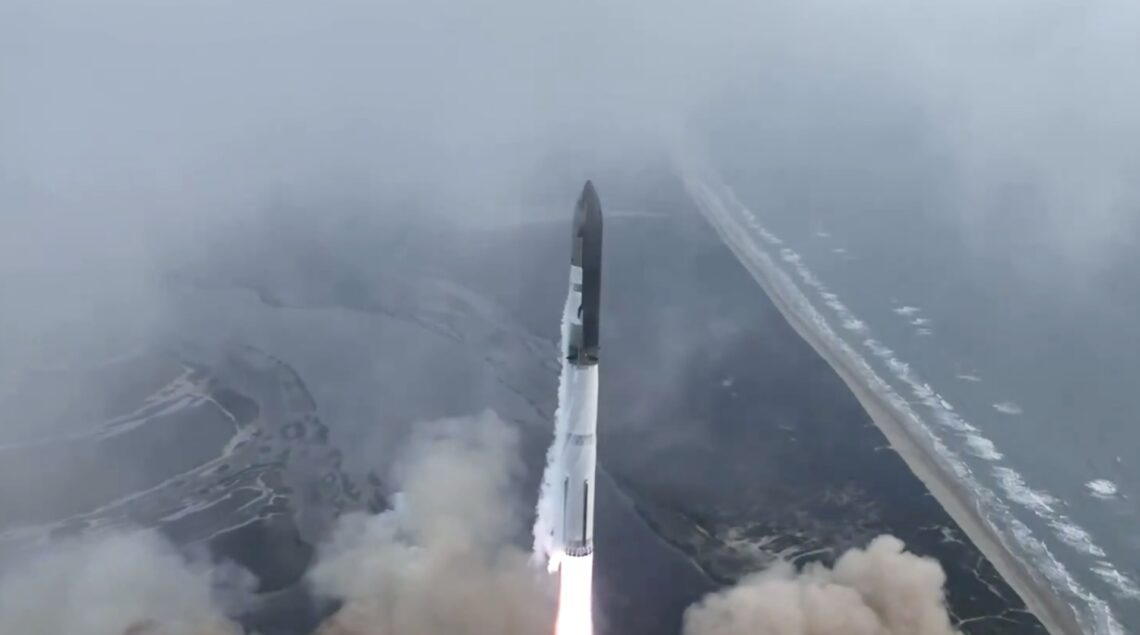WASHINGTON — SpaceX’s Starship vehicle lifted off on its third test flight March 14, making significant progress compared to its first two.
The Starship/Super Heavy vehicle lifted off from the company’s Starbase site at 9:25 a.m. Eastern. The liftoff was delayed by nearly an hour and a half because of ships in restricted waters offshore. SpaceX reported no technical issues during the countdown.
The Super Heavy booster fired all 33 of its Raptor engines for nearly three minutes before executing “hot staging”, with the Starship upper stage’s engines igniting while still attached to Super Heavy. The booster then performed burns to attempt what SpaceX webcast hosts called a “soft splashdown” in the Gulf of Mexico, where it would not be recovered. However, the landing burn did not appear to go correctly, and telemetry suggested the booster hit the water at speeds in excess of 1,000 kilometers per hour.
The Starship upper stage performed its burn, placing the vehicle onto its planned suborbital trajectory. It avoided the fate of the previous Starship launch in November, when the vehicle broke apart late in its burn after catching fire while venting propellant.
While in space on its suborbital trajectory, SpaceX opened a payload bay door that will be used on later Starship vehicles for deploying Starlink satellites. It also performed an in-space propellant transfer demonstration as part of a NASA contract where it would move propellant from one tank within the vehicle to another.
The launch came after a final regulatory milestone, an update Federal Aviation Administration launch license, issued late in the day March 13. The license required an additional environmental review after SpaceX changed the vehicle’s trajectory from the first two integrated test flights, targeting a splashdown in the Indian Ocean rather than near Hawaii.
That environmental assessment revealed that SpaceX expected Starship to explosively break apart…
Read the full article here

